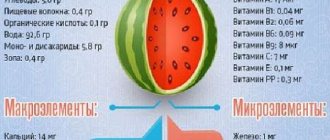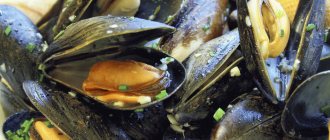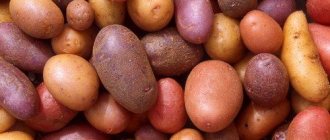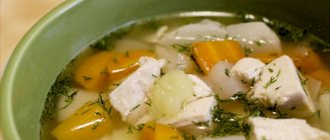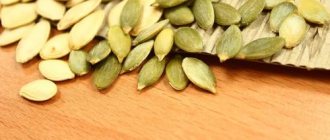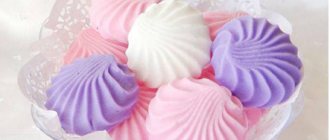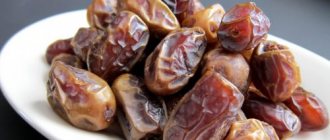Corn is a product that benefits the body when consumed correctly. The cereal has a rich chemical composition, perfectly saturates and helps to improve the digestion process. However, despite its beneficial properties, it also has a number of contraindications.
In this article we will touch on the topic of the possibility of consuming boiled, canned corn and corn snacks for pancreatitis.
Acute pancreatitis
Since corn is a dietary product, a reasonable question arises: is it possible to eat corn during exacerbations of chronic pancreatitis.
On the other hand, during exacerbations, patients are allowed only clean water without gas. Then light foods without fats and acids are gradually introduced. It is forbidden to consume corn in acute pancreatitis for several reasons:
- The product is a rough food that requires significant effort from the stomach and intestines to digest. Despite all the benefits of corn, the gastrointestinal tract during an exacerbation of the disease does not have the resources to digest such heavy food.
- Since corn contains a lot of starch, processing it puts additional stress on the pancreas. Therefore, the product is not allowed for exacerbations.
In the first days after an attack of pancreatitis, you can drink water; many also recommend rosehip decoction. Then, according to the recommendations of the gastroenterologist, secondary broths and mucous crushed porridges are introduced.
Use in the acute stage
Acute pancreatitis requires complete abstinence from foods that can aggravate the disease, including corn. Starchy compounds require more enzymes to break down. In this case, the maximum load falls on the pancreas.
Important! The main goal of drug treatment and diet is to reduce the production of enzymes entering the gastrointestinal tract.
In the chronic stage
Lack of timely treatment and a sluggish inflammatory process lead to the disease becoming chronic. But through the joint efforts of the doctor and the patient, it is possible to achieve complete or partial subsidence of symptoms.
Boiled whole corn grains are still prohibited for chronic pancreatitis. In the stage of complete and long-term remission, the patient can afford to enjoy corn kernels and viscous porridge with water in small quantities and only after consulting the attending physician.
Consumption standards
After the condition has stabilized and the unpleasant symptoms have disappeared, corn is gradually returned to the menu. The norm for consumption of boiled grains and porridge is 100 g per day, no more than 1-2 times a week.
Chronic form
In case of chronic pancreatitis, there are more permitted foods, but they also need to be taken with caution, since the duration and the likelihood of an attack depend on proper nutrition during the period of remission.
If you have chronic pancreatitis, you should not eat whole grains. It is also not recommended to eat raw unripe grains, canned corn, and even boiled corn for pancreatitis.
However, during remission, small portions of corn porridge can be gradually introduced into the patient’s diet. A boiled product, if brought to full readiness, is easier to digest by the digestive tract.
Other options
We found out that boiled corn cobs are prohibited in chronic and acute cases of the disease, with the exception of the period of stable remission.
Now let's figure out whether it is possible or not to eat canned grains, cereals and snacks.
Canned corn
Canned corn is considered the most dangerous product for inflammation of the pancreas.
The following is added to the composition of industrial canned food:
- dyes;
- vinegar;
- flavor enhancers;
- citric acid;
- preservatives.
All these components can cause an attack of acute pancreatitis.
Flakes
For their production, premium corn flour, sugar, trans fats, and food additives are used. The result is a high-carbohydrate product with high calorie content.
There are about eight tablespoons of refined sugar per 100 g of glazed flakes. The conclusion is obvious: the quick breakfast beloved by many is not only not healthy, but also dangerous for those who suffer from inflammation of the pancreas.
Popcorn
Puffed corn contains a large amount of fiber and is undoubtedly beneficial for the gastrointestinal tract of healthy people. But patients with pancreatitis should be wary of such products because of:
- coarse dietary fiber;
- large amounts of sugar, salt and butter.
Sticks
After processing corn grains to produce sweet sticks, the product completely loses its beneficial properties and contains virtually no dietary fiber. The load on the digestive tract is reduced, but the presence of sugar, dyes and preservatives does not make snacks healthy for people suffering from pancreatitis.
Corn porridge
Corn porridge is not on the list of prohibited foods. To prepare it, use finely ground cereal. Only in this form is the product safe for a diseased pancreas. The porridge is boiled until it becomes a jelly in water for at least 30 minutes. Then the pan is wrapped in a towel and left to infuse.
Second courses
As for corn porridge, it can be introduced into the patient’s diet when the disease goes into remission. Preparing porridge that is healthy and safe for a patient with pancreatitis is quite simple.
- To do this, bring the water to a boil and pour corn porridge into the pan.
- You need to add it gradually, in portions, stirring thoroughly.
- Then reduce the heat and simmer over low heat for about half an hour, stirring so that the porridge does not stick to the walls and bottom of the pan.
- When the porridge is sufficiently boiled and soft, cover the pan with a lid and place in the oven.
- In this case, the oven can be preheated and turned off - the residual heat is enough.
- For this purpose, the porridge is first cooked in cast iron cauldrons - it turns out softer.
However, the taste of the porridge is quite specific and harsh, so not everyone may like it. Sometimes, for corn lovers suffering from inflammation of the pancreas, second courses become a real salvation.
Corn for cholecystopancreatitis
This disease is a combination of pancreatitis and cholecystitis. In the first case, inflammation of the pancreas is observed, in the second, the gallbladder suffers. In such a situation, a violation of the outflow of bile and a change in its physical and biochemical properties occurs.
Therefore, if you have cholecystopancreatitis, you should follow a diet. It helps normalize the patient's condition and restore the function of the gallbladder. With this diagnosis, it is forbidden to eat corn on the cob or its grains.
To achieve a therapeutic effect, you can include corn silk-based products in your diet. They are thread-like fibers that are found around the cob.
The product copes well with kidney diseases, gastrointestinal ailments and bladder inflammation
The product contains many vitamins, essential oils, microelements, and tanning components. Thanks to this, the stigmas have a choleretic effect and cleanse the gallbladder of stones.
The product also helps neutralize toxins, restore metabolism and strengthen the immune system.
Sticks
Corn sticks are familiar and loved by many from childhood, but if you have pancreatitis, their use is undesirable. The type of corn processing required to make sticks makes it less difficult for the digestive tract, but at the same time, manufacturers add all sorts of additives that are prohibited for pancreatitis.
The most common additives found in corn sticks are flavor enhancers, dyes, powdered sugar, hot and salty seasonings. Especially the latest supplements can affect the functioning of the pancreas and lead to an acute attack.
Corn silk
Corn cob fibers have a complex effect on the body:
- help strengthen bone tissue;
- produce a diuretic effect;
- normalize sugar and insulin parameters;
- reduce excitability;
- help calm the nervous system;
- normalize sleep.
All these properties are very important for pancreatitis, the symptoms of which negatively affect the psychological state of the patient.
It is worth considering that healing decoctions should be prepared only from young fibers of a light yellow hue. They should be collected before pollinating the plant. Old and dry stigmas are not recommended for use. They contain a minimum of useful components.
Popcorn and corn flakes
Everyone's favorite treat in the form of popcorn is made from the grains of the crop in question. It is good to eat while watching movies or while visiting a cinema, but it is prohibited for patients with pancreatic pathology, since it contains ingredients such as:
- granulated sugar;
- dyes;
- other additives, not recommended for pancreatic pathology, that help enhance taste.
Moreover, the process of making popcorn involves frying corn kernels, and fried food is strictly prohibited if inflammation occurs in the cavity of the parenchymal gland. Corn poppers are also a prohibited product.
Corn flakes contain a high concentration of fast carbohydrates. With frequent consumption of corn flakes by a healthy person, a large amount of these carbohydrate compounds accumulate in the body, which subsequently begin to be deposited in the form of subcutaneous fat in the waist, hips and butt. In the UK, corn flakes are included in a remote group of food products that have a particular level of harm to the health of the human body. The dietary diet prescribed for pancreatic pathology excludes the consumption of foods containing a high concentration of fiber, since they overload the parenchymal organ, which is already affected by the inflammatory process.
Can I eat it canned?
For diseases of the pancreas, any canned products are included in the prohibited list. The process of preparing this type of corn involves the use of preservatives and other harmful ingredients. Eating even a few grains added to a dietary vegetable salad can trigger an acute attack of pancreatitis.
In addition, canned corn does not retain even half of its valuable food qualities. Therefore, adding it to your diet is not only dangerous, but also irrational.
Popcorn corn - what are its health benefits?
Below is a list of the positive properties of the treat:
- Helps the body remove toxins. Once inside, corn fibers act like a brush, cleansing the gastrointestinal tract of accumulated chemicals and carcinogens.
- Saturates organs with B vitamins and fiber.
- Helps in the fight against obesity. The snack is low in calories, so it can be consumed on a diet.
- It satisfies hunger well. Two or three handfuls of popcorn will give you a feeling of fullness, which will help you avoid overeating.
- Speeds up metabolism.
- Contains antioxidants that are beneficial to the body, as well as polyphenols, which are effective prevention of heart and vascular diseases and oncology.
Please note that the positive properties of corn delicacies listed above are relevant only for a natural product prepared without the use of flavors, fat, flavor enhancers and other additives.
Are there any benefits of puffed corn for the human body?
The product is made from ripened grains. During the production process, they are dried and packaged in dense fireproof bags. To prepare a portion of the treat, you need to put the unopened pack in the microwave or oven, or put it in a heated frying pan for a few minutes.
The temperature causes the grains to burst and turn inside out. The end result is a crispy, delicious snack. Since no chemicals are used when making popcorn at home, its positive properties are identical to those of the raw material - corn. In adequate doses, the snack is very beneficial for the body.
You can learn more about nutrition rules and the principles of forming a reasonable diet in a
7-module certification course in dietetics and nutrition from leading nutritionist Oleg Iryshkin.
Features of product use
Can you eat canned corn if you have pancreatic disease? Gastroenterologists have learned that for pancreatitis, pickled vegetables are considered no safer than raw ones. As with other canned foods, the cereal is sold with the addition of vinegar, citric acid, and preservatives, which provoke severe outbreaks of pancreatitis.
Even if you add corn to a dish in small quantities, this can lead to the development of an attack of pathology.
Sticks made from vegetables also do not need to be included in the diet in case of pathology. With this processing method, the grains do not have natural heaviness, and they contain various harmful additives.
Is it permissible to include popcorn in the diet if the disease is in remission? No, because it also contains chemical additives, salt and sugar, and flavor enhancers. In addition, the cooking procedure itself is harmful to the digestive organs - frying.
It is forbidden to include corn flakes in the diet for pancreatitis. The reason is the same as for canned popcorn. If you often eat cereal in large quantities, it is harmful.
- Cereals are high in calories, since when preparing them they use refined oil, sugar, and other high-calorie additives.
- There are stabilizers, flavorings, and flavor enhancers that negatively affect the tract. Cereals are especially dangerous if eaten in the morning and when a person is hungry.
Regarding boiled corn, it is also unacceptable to eat it, since the grains contain a large amount of downed fibers that are not digestible in the stomach.
In rare cases, if the grains are well cooked, it is allowed to consume no more than 50 grams per day and no more than 2 times a month.

